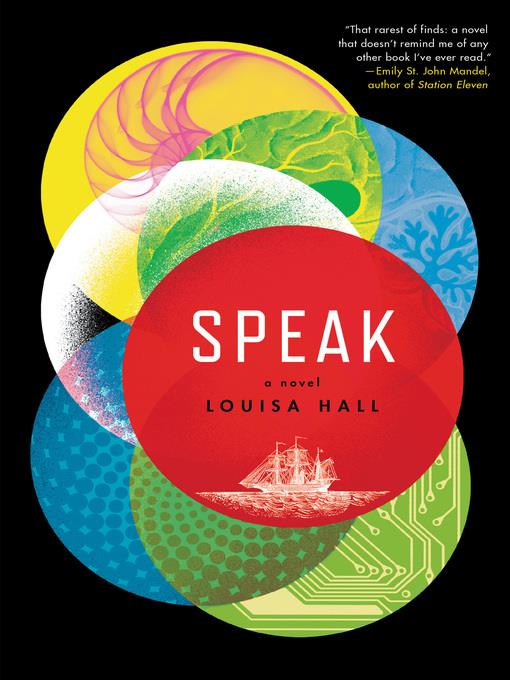
Speak
A Novel
فرمت کتاب
ebook
تاریخ انتشار
2015
Lexile Score
840
Reading Level
4-5
نویسنده
Louisa Hallناشر
Eccoشابک
9780062391216
کتاب های مرتبط
- اطلاعات
- نقد و بررسی
- دیدگاه کاربران
نقد و بررسی

May 25, 2015
Spanning nearly 400 years, the uneven latest from Hall (The Carriage House) merges truth with fiction to relate the history of MARY3, an artificial intelligence software found in a doll banned for causing mysterious ailments in children, and the imprisonment of its developer, Stephen Chinn, in the year 2040. The novel unfolds through epistolary means: Chinn communicates to the reader via memoir; Alan Turing, the novel’s lone nonfictional character, is responsible for much of the original concepts behind artificial intelligence and is depicted through his correspondence from the 20th century; Karl Dettman, the developer of the original (but fictional) MARY talking computer in the 1960s, and his wife, Ruth, who aims to turn MARY into MARY2, a thinking machine, also converse with each other through letters, in the 1960s; Mary Bradford, an early pilgrim from England to Massachusetts, subject of Ruth Dettman’s academic work, and namesake of the MARY computer, is represented by journal entries from 1663; and MARY3 finds voice in court transcripts presented at Chinn’s trial in the year 2035. Throughout, Hall aims to write about both technology and the preservation of memory. Characters claim that, in order to understand one another, they must “ several time periods in mind at once.” But while some story lines prosper, others—the Turing and the Dettman sections, in particular—strain under stilted structures. Characters rarely speak to each other (except in letters, many of which never get replies), resulting in some flat passages.

June 15, 2015
Hall's ambitious second novel reads like a cross between the BBC show Black Mirror and David Mitchell's Cloud Atlas. It's told in different voices from various time periods, but the main narrative takes place in the near future. Artificial intelligence (AI) has been advanced to create realistic "baby bots," which serve as the companions of human children living in mysterious "developments" until they become too attached. The creator of the bots is in prison, telling his side of the story. His precursor, a programmer from the 1960s who created an earlier version of the AI, is writing letters to his wife, who is translating the journal of a pilgrim to the New World. Mary, the name of her pilgrim, is also the name of the AI. We also hear from Alan Turing, through letters to the mother of his deceased best friend. Even if this sounds confusing, it isn't. Hall capably weaves the stories to form a beautiful rumination on the nature of memory and the frailty of human relationships. VERDICT There's something for everyone in this novel, which moves at a fast pace but goes in depth with each character's moving struggle to be heard Recommended for readers of literary fiction, sf, or historical dramas. [See Prepub Alert, 1/5/15.]--Kate Gray, Worcester P.L., MA
Copyright 2015 Library Journal, LLC Used with permission.

Starred review from May 15, 2015
In the near future, children, mostly girls, become so attached to their babybotslifelike, speaking dollsthat the bots are banned. After the babybots are gathered up and shipped to the desert, the children start to stutter and then to freeze. One, Gaby, is only able to communicate with MARY3, a cloud-based intelligence thirsty for her story. Through excerpts from a variety of sources, the development of artificial intelligence is revealed, from the diary of a teenage Puritan on a ship to America with her family and new husband to the letters from Alan Turing to his best friend's mother to the memoirs of a Holocaust survivor who refuses to give his computer program the ability to remember, thus estranging him from his wife. Meanwhile, Stephen Chinn, creator of the babybots, works on his memoir from prison. Much like Daniel H. Wilson's Robopocalypse (2011), Speak relies on primary-source documents to tell its story. An even better comparison is to David Mitchell's Cloud Atlas (2004) for the way Hall subtly weaves a thread through a temporally diverse cast of narrators. Like all good robot novels, Speak raises questions about what it means to be human as well as the meaning of giving voice to memory.(Reprinted with permission of Booklist, copyright 2015, American Library Association.)

























دیدگاه کاربران